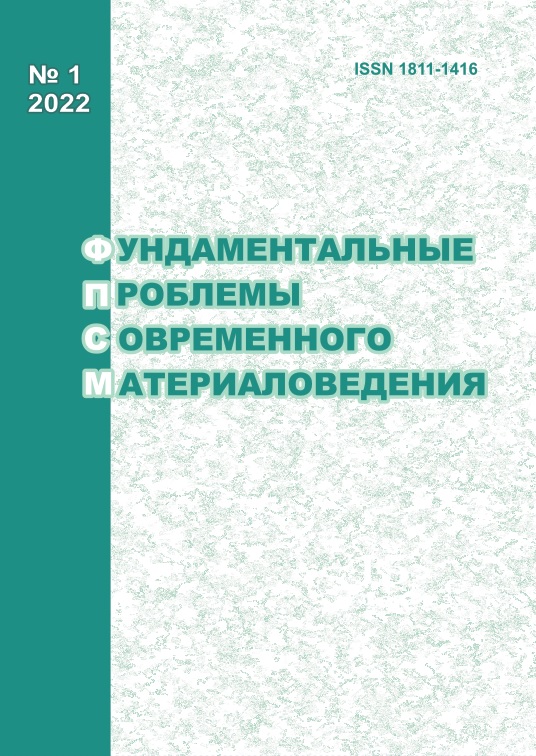MOLECULAR DYNAMICS STUDY OF THE EFFECT OF EXCESS FREE VOLUME ON THE VELOCITY OF THE CRYSTALLIZATION FRONT MOVEMENT IN NICKEL
10.25712/ASTU.1811-1416.2022.01.006
Keywords:
molecular dynamics, metal, crystallization, free volumeAbstract
The method of molecular dynamics was used to study the dependence of the velocity of the crystallization front in nickel on the excess free volume. The computational cells had the shape of elongated parallelepipeds. At the ends of the parallelepiped, the crystal structure was fixed, which imitated the starting position of the heterogeneous crystallization front. Three different orientations of the front relative to the growing crystal were considered: (100), (110), and (111). To describe interatomic interactions, many-particle tight-binding Cleri-Rosato potential was used. The free volume was introduced into the model at the initial stage by setting a certain concentration of vacancies. The concentration of the excess free volume and the formation of vacancy clusters occurred mainly last, at the final stage of crystallization. The introduction of excess free volume led to a decrease in the crystallization rate. On the one hand, the presence of an excess free volume should lead to a decrease in the activation energy of self-diffusion, but, on the other hand, it seems that the formation of micropores and vacancy clusters occurred near the growing crystal boundary, which reduced the access of atoms from the liquid phase to the crystal boundary. At high concentrations of several percent, the formation of some clusters occurred already at the early stages of crystal growth, but most of them, nevertheless, were located at the meeting point of two fronts from different ends of the computational cell. Crystallization proceeded faster at the (100) front orientation, slower at the (110) and (111) orientations. The anisotropy of the crystallization rate is related to the difference between the free energies of an atom near the boundary in the liquid phase and a growing crystal "embedded" into the boundary, which depends on the orientation of the boundary and, in particular, correlates with the energy of the adatom on the corresponding free surface of the crystal.











 Journal «Fundamental’nye problemy sovremennogo materialovedenia / Basic Problems of Material Science»
Journal «Fundamental’nye problemy sovremennogo materialovedenia / Basic Problems of Material Science» This work is licensed under a
This work is licensed under a 
